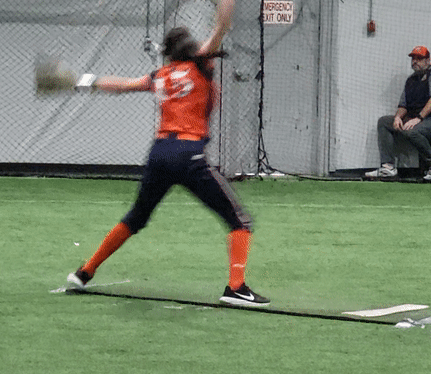- May 16, 2016
- 946
- 93
What does separating the hands have to do with crow hopping? Barnhill separates at the start of her backswing and never brings the hands back together.
Interestingly enough, the NCAA rules do not specifically state a "Crow hop" is illegal. The only reference to "Crow hop" in the NCAA rules is rule 10.5.5.
10.5.5 The pitcher is not allowed to hop or drag to a replant (crowhop), gain a second starting point and push off her pivot foot.
What constitutes a "second starting point"? Well, rule 10.3 states:
10.3 Start of the Pitch The pitch officially begins and cannot be discontinued once the hands have separated after coming together.
So, if your hands separate after pushing off the pitcher's plate, that would be a "Second starting point".
The NFHS rules are written a little differently, but I think the intent is the same as the NCAA rules. Which is why the NFHS training video is very consistent with the NCAA rules above.
I think Barnhill was likely called for illegal pitches mostly for leaping, or possibly for the "bearing weight" rule the NCAA added.






